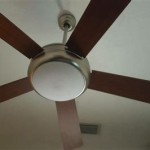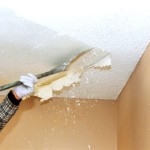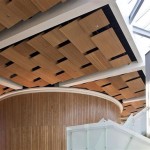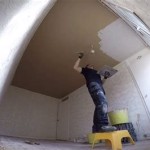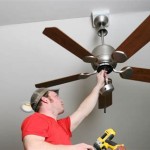What Does a Vaulted Ceiling Mean?
A vaulted ceiling is a common architectural feature that adds character, style, and volume to a room. It is characterized by its arched shape, which creates a dramatic and visually appealing effect. Vaulted ceilings have been used in buildings for centuries, with examples dating back to ancient times. Today, they continue to be a popular choice for both residential and commercial spaces.
Types of Vaulted Ceilings
There are several different types of vaulted ceilings, each with its unique characteristics:
- Barrel Vault: A barrel vault is a simple, curved ceiling that resembles the shape of a half-cylinder. It is typically used in long, narrow spaces, such as hallways or corridors.
- Groin Vault: A groin vault is formed by the intersection of two barrel vaults. It creates a ribbed or segmented effect that adds visual interest to the ceiling.
- Ribbed Vault: A ribbed vault features prominent ribs that extend from the corners of the room to the central point of the ceiling. These ribs provide structural support and create a decorative element.
- Dome Vault: A dome vault is a hemispherical or semi-circular ceiling that creates a grand and imposing effect. It is often used in large, open spaces, such as churches or auditoriums.
Advantages of Vaulted Ceilings
Vaulted ceilings offer several advantages, including:
- Increased Space: Vaulted ceilings create the illusion of more space by drawing the eye upward. This makes them a good choice for small or cramped rooms.
- Improved Lighting: The arched shape of a vaulted ceiling helps to distribute light more evenly throughout the room, reducing shadows and creating a brighter and more inviting atmosphere.
- Architectural Interest: Vaulted ceilings add architectural interest and character to a space. They can be customized with different shapes, materials, and finishes to suit any style.
Disadvantages of Vaulted Ceilings
While vaulted ceilings offer many benefits, they also have some potential drawbacks:
- Higher Construction Costs: Vaulted ceilings are more complex to construct than flat ceilings, which can increase the overall building costs.
- Dust and Dirt Accumulation: The high ceilings can make it more difficult to clean and remove dust and dirt, especially in hard-to-reach areas.
- Heating and Cooling Challenges: Vaulted ceilings can make it challenging to maintain a consistent temperature in a room. Heat can rise and collect at the top of the ceiling, creating hot spots.
Choosing a Vaulted Ceiling
If you are considering adding a vaulted ceiling to your home, it is important to carefully consider the potential advantages and disadvantages. You should also consult with a qualified architect or builder to ensure that the ceiling is designed and constructed properly to meet your specific needs.
Vaulted ceilings can be a beautiful and functional addition to any home. By understanding the different types, advantages, and disadvantages, you can make an informed decision about whether a vaulted ceiling is right for your space.

Differences Between Vaulted Ceilings And Cathedral

Vaulted Ceilings 101 History Pros Cons And Inspirational Examples

Vaulted Ceilings 101 The Pros Cons And Details On Installation Bob Vila

What Is A Vaulted Ceiling Pros And Cons Of Ceilings

What Is A Vaulted Ceiling Pros And Cons Of Ceilings

Ceilings Vaulted Or Cathedral Drummond House Plans Blog

What Is A Vaulted Ceiling Pros And Cons Of Ceilings

Problem Ceilings That Could Definitely Wreck Your Room Laurel Home

Cathedral Ceilings Vs Vaulted

Vaulted Ceilings 101 History Pros Cons And Inspirational Examples
Related Posts


